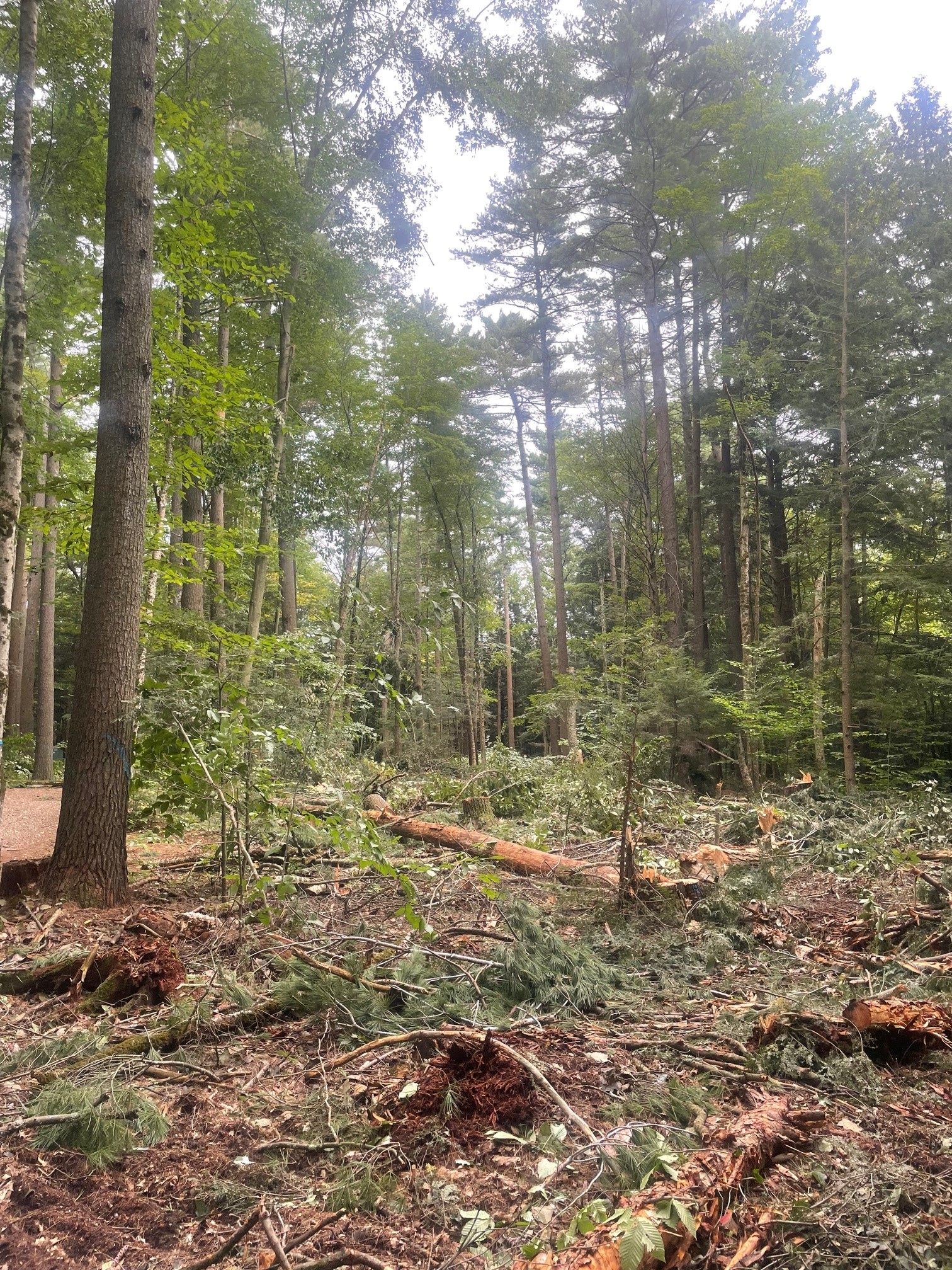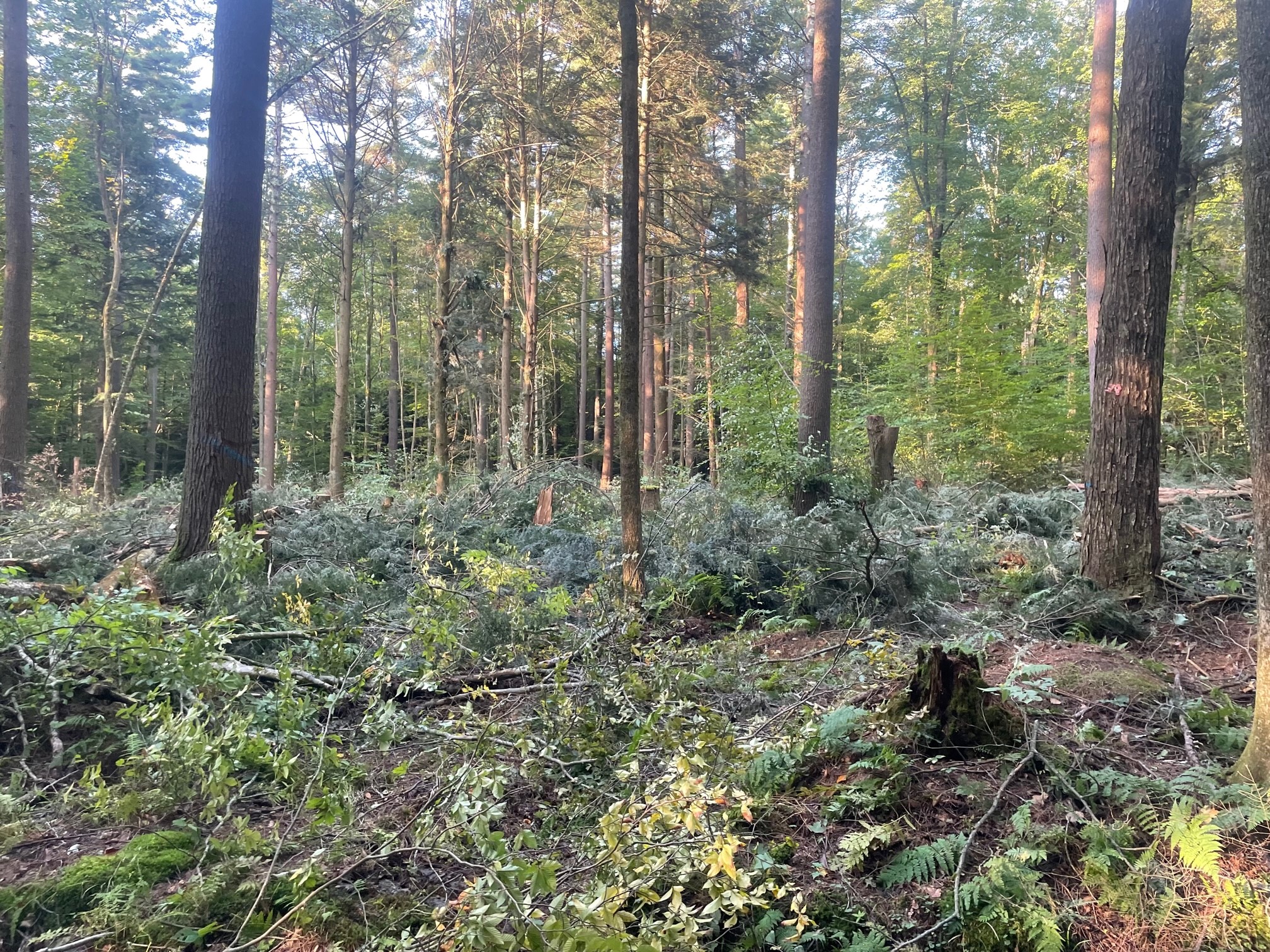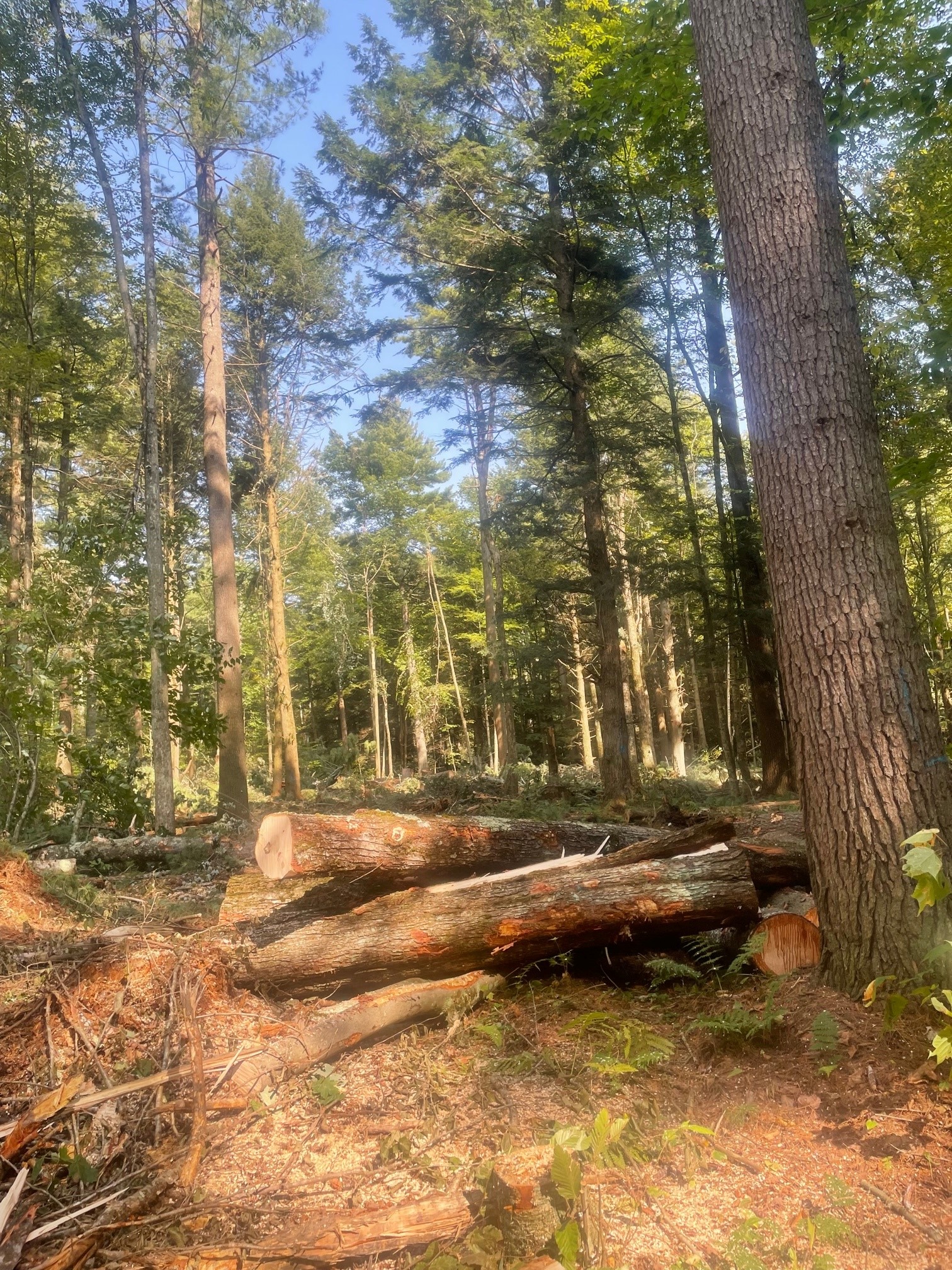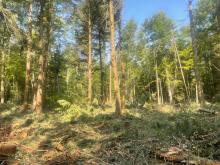Secondary tabs
Submission information
| Study Title | Catamount Community Forest |
|---|---|
| Case Study Type | Forest type, Forest health, Management type |
| Management Subcategory | forest adaptation, carbon, managing invasives, ecological restoration, sawlog production, wildlife habitat |
| Site Photo |
|
| Lay Summary | The Catamount Community Forest, located in Williston, VT, is managed by the Town of Williston as a municipal forest. Management is done holistically for timber harvesting and management, educatoin, water quality protection, public recreation, and wildlife habitat, and is done in a way that considers aesthetics, carbon sequestration and storage, cultural, economic, and community values, and the importance of demonstrating responsible forest stewardship. The goal is to encourage a healthy, resilient, diverse forest while demonstrating forest management and stewardship. Management is to be done by a Vermont-licensed forester and day-to-day administration is done by The Catamount Community Forest Committee under the advisement of the Chittenden County Forester. |
| Location | Williston, Vermont |
| Location Description | Park at Catamount Outdoor Family Center and follow Woods Trace and Sandman trails to find the entrace on the northwest corner of the property |
| Latitude | -73.04765396406586 |
| Longitude | 44.45004521809054 |
| Directions | Parking lot can be found at 553 Governor Chittenden Road, in Williston, VT |
| Landowner Name | Town of Williston |
| Landowner phone | +1 802-585-9099 |
| Landowner email | ethan.tapper@vermont.gov |
| Stand Area with Units | 25 acres |
| Cover Type | Mixed Pine-Hardwood Forest |
| Natural Community Classification | Hemlock-Northern Hardwood Forest (VT) |
| Plant Community/Habitat Class Growth Stage | Early- to mid-successional forest |
| Primary Forest Health Threat | invasive plants |
| Secondary Forest Health Threats | |
| Soils | Majority deep, well-drained, acidic soils with some soils being enriched, or poor, thin, and dry |
| Estimated Stand Year Origin | 1930 |
| Start date | Mon, 09/04/2023 - 00:00 |
| End date | Sat, 09/30/2023 - 00:00 |
| Stand History | Stand 2 likely reverted from pasture around 1930 and was last managed in 1978 and 1980 with thinning and group selection. Stand 3 reverted from pasture around 1960 and was last managed in 2016 with a thinning. |
| Species 1 | Pinus strobus (eastern white pine) |
| Species 1 Percent(%) | 29% |
| Species 2 | Acer rubrum (red maple) |
| Species 2 Percent(%) | 15% |
| Species 3 | Tsuga canadensis (eastern hemlock) |
| Species 3 Percent(%) | 13% |
| Case Overview | The Catamount Community Forest, located in Williston, VT, is managed by the Town of Williston as a municipal forest. Management is done holistically from timber harvesting and management, education, water quality protection, public recreation, and wildlife habitat, and is done in a way that considers aesthetics, carbon sequestration and storage, cultural, economic, and community values, and the importance of demonstrating responsible forest stewardship. The goal is to encourage a healthy, resilient, diverse forest. The land was once used as sheep pasture and was slowly reverted to forestland. The agricultural usage of the land, as well as the natural regeneration, and site characteristics shaped the character of CCF. |
| Silviculture Objectives | Increased structural and species diversity by releasing individual trees and creating group openings of a variety of sizes. Retain legacy trees and lots of dead wood. Advance development of old forest characteristics. Create scarification to encourage regeneration of white pine, hemlock, yellow birch, and red oak. |
| Landowner Objectives | The landowner's objectives are to honor the terms and conditions of the Catamount Community Management Plan, and the Catamount Community Forest's conservation easement, increase carbon sequestration and storage capacity in the CCF, act aggressively to control invasive exotic plant species, work to enhance species and structural diversity over time, demonstrate responsible forest stewardship to increase forest stewardship quality, encourage late-successional and biological legacy trees, demonstrate forest management that supports forest adaptation and in partnership with University of Vermont at CCF and neighboring Talcott Forest, protect and enhance uncommon natural community types and sensitive features, water resources, cultural resources on the property, opportunities for wildlife, including providing habitat conditions that are relatively uncommon across the landscape, and the resilience of forests to climate change and both natural and human-caused disturbance events. It is crucial for desired future conditions that certain objectives are met. It is important to maintain species composition as a mixed pine-hardwood forest with some deviation from current conditions, favor white pine and red oak species, increase abudnance of drought-adapted species currently on site and those projected to increase in region under climate change, increase age class diversity and amount of dead wood for safe sites for regeneration, erosion control, and moisture retention on site, consistently apply BMPs to minimize impacts of episodic hydrological events, ensure presence of advance regeneration to allow recovery following disturbance, enhance stability of selected carbon pools while encouraging accretion in others, remove and prevent establishment of non-native plant species, and maintain diversity of microhabitats for wildlife, forest conditions that allow water and nutrient cycling to recover from pre-disturbance rates, minimum BA of 70-80 ft^2/ac with mosaic of lower density regeneration openings and higher density interpatch areas, and maintain and increase vigor and quality of residual trees while maintaining current productivity levels consistent with type. |
| Silviculture Prescription | - Group selection: 20% of the area in 0.25-1-acre gaps, anchoring gaps on large white pine and red oak, or in areas with advanced regeneration of desired species. 20% in reserves, light thin remaining matrix to maintain 100-110 ft^2/ac BA, mark for quality and longevity, resistance crown forms, retain all spruce, and plant nearby central hardwood species not currently found on site as well as species with similar ecological functions that occur within 100 miles of CCF in gaps. - Cutting cycle will be every 20 years - Expand previous gaps or implement fewer gaps to promote red oak and white pine advanced regeneration established following previous harvest entry - Assess red oak and white pine regeneration in thinning matrix areas to determine next steps in matrix - Favor summer/fall harvesting to achieve incidental scarification to promote light-seeded species and burial of acorns - Additional site prep in gaps if needed to remove invasive species and other competing species - Harvest during a good cone/acorn year to promote white pine and red oak - Retain slash on site to alleviate overland flow and minimize erosion - Deliberately fell 3 large, low quality/cull trees per acre for downed woody material - Apply VT AMPs |
| Regeneration Targets/Goals | - Multiple combinations of species composition and structure present (multiple pathways to recovery from disturbance) |
| Regeneration Method | selection |
| Factors Influencing Prescription Choice |
|
| Climate Adaptation Considerations | Forest resilience to climate change and natural and human-caused disturbance events is crucial. |
| Equipment used | Cut-to-length system |
| Prescription Notes | Cut-to-length system used in September 2023. Less scarification and dead wood than desired due to the equipment used, but still areas of good scarification and lots of dead wood (all pine pulp left on site, including some larger sections with red rot). Overall, project went very well. |
| Treatment Total Cost | No Cost - treatment created $19,000 in revenue to landowner |
| Primary Contact | Ethan Tapper |
| Contact Title | Chittenden County Forester |
| Contact Organization | Vermont Department of Forests, Parks, and Recreation |
| Contact Email | ethan.tapper@vermont.gov |
| Contact Phone | +1 802-585-9099 |
| Contact Address | 111 West St Essex Junction, Vermont. 05452 |
| Additional Photo 1 |

|
| Additional Photo 2 |

|
| Additional Photo 3 |

|
